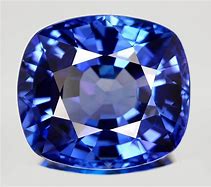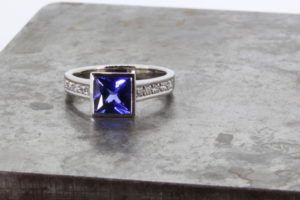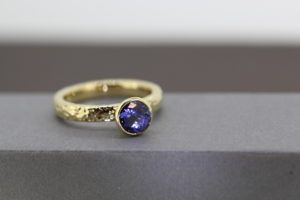


Tanzanite Key Facts
- 5-7 on the Mohs scale of hardness
- Can exhibit more than one colour – blue, violet, purple, bronze or grey
- Only found in Tanzania
- December’s birthstone
- Said to help one deal with change
General Information on Tanzanite
Tanzanite is the crystalline form of the mineral zoisite. It is considered a rare gemstone, the zoisite crystals form in the presence of vanadium, which is a soft, grayish-silvery metal. Tanzanite is found in only one place in the entire world, Tanzania, near Mt. Kilimanjaro. As a result of this there is probably only enough tanzanite in the ground to last for another 20 years. Tanzanite is customarily heat treated to drive off impurities and produce the beautiful purplish-blue color for which tanzanite is known. The resulting color is permanent and is considered an acceptable treatment. Tanzanite is a new addition to the list of top-selling colored gemstones. America buys around 70% of all tanzanite that is mined.
Tanzanite has a Mohs hardness of 6.5 to 7.0 and is considered durable enough to be worn in most types of jewellery. Although it is hard it is quite a brittle stone, and so therefore it is prone to chipping. Tanzanite will scratch more easily than sapphire or diamond and should not be exposed to harsh chemicals and ultra-sonic cleaning.
The value of tanzanite depends on the depth of color and size. Lower graded tanzanite may range in colour from a sky blue to purple and is not considered very valuable. Other factors determining value and price are cut, clarity, carat weight and recent news related to supply. Due to the fact that tanzanite is approximately one-fourth to one-third the cost of a similarly colored sapphire, it should continue its popularity for many years to come.
Tanzanite has been recognized as helping one deal with change. Tanzanite is also known to uplift the spirit and open the heart. The blue and purple hues of tanzanite are associated with generosity and friendship.

